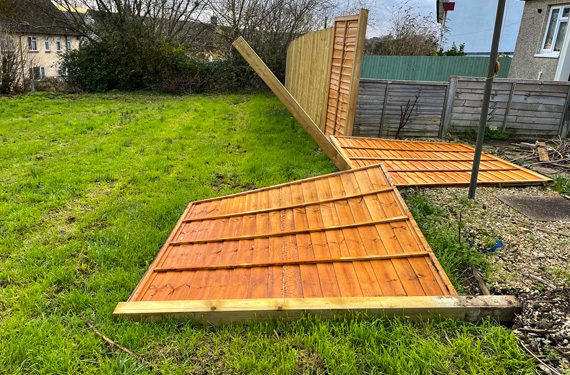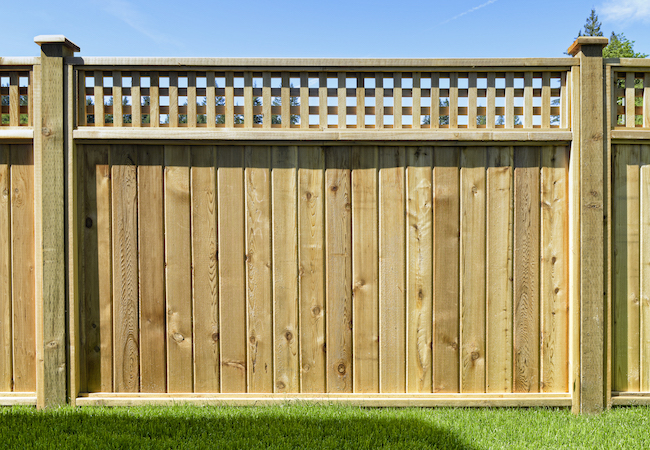Featured
The success of your fencing installment depends greatly on exactly how well you prepare your residential or commercial property before the installment begins. Below are some essential actions to adhere to when preparing your property for a fencing installment.
![]()
Furthermore, it is necessary to find any below ground energies, such as water lines, gas pipelines, or electrical cable televisions. Get in touch with your neighborhood utility firm to note the locations of these below ground systems to stop any damage throughout excavating.
![]()
![]()
Final thought. Preparing your home for a fencing setup is an essential step that can conserve you time, money, and headaches throughout the procedure. By looking into neighborhood regulations, identifying residential property lines, clearing the installation area, guaranteeing access for tools, and finalizing your style, you can guarantee a smooth setup. Taking these simple steps will certainly assist you accomplish a durable and lovely fencing that enhances the personal privacy, safety, and look of your building.

- Research Resident Rules and Permits. Prior to you start, ensure you check the regional zoning regulations and acquire any required licenses for your fencing installment. Several locations have certain guidelines on fencing elevation, positioning, and material, and you might need a license to proceed. Additionally, if you stay in a neighborhood with a Homeowners Organization (HOA), make sure to review their regulations pertaining to fencing. Failure to get the correct authorizations or comply with neighborhood laws can cause penalties and even the need to eliminate the fence.
- Determine Residential Or Commercial Property Boundaries. Recognizing the specific borders of your residential or commercial property is vital to guarantee the fencing is installed in the correct place. Be sure to examine if your neighbors have any existing structures or fencings close to the building line that might influence the installment procedure.
- Clear the Installation Area. You'll need to get rid of the installation area when you have actually determined your property lines. Get rid of any type of trees, hedges, rocks, and debris that might block the fencing setup. This consists of lowering any type of thick plants and trimming branches that may remain in the way. You may need to dismantle it prior to the installment team gets here if there is an existing fence. Clearing the area beforehand will certainly not only speed up the installation but will also reduce any kind of added costs related to getting rid of challenges.
Furthermore, it is necessary to find any below ground energies, such as water lines, gas pipelines, or electrical cable televisions. Get in touch with your neighborhood utility firm to note the locations of these below ground systems to stop any damage throughout excavating.
- Prepare for Access to Your Property. Throughout the installment procedure, your contractor might require hefty devices to dig holes and move products. Make certain that there is very easy access to your residential property for installment trucks and equipment. If you have a slim driveway or restricted access, notify your professional beforehand so they can prepare their method appropriately. This might include relocating automobiles, rearranging landscaping, or temporarily getting rid of barriers in the method.

- Review Your Fencing Style with Your Professional. Before installation begins, you'll need to settle the style and materials for your fence. Whether you choose wood, vinyl, chain-link, or one more product, it is very important to interact your choices to the contractor. Discuss the fence's function, such as whether you're seeking personal privacy, design, or safety and security. This will influence the kind of products and design that function best for your property. Your contractor will certainly likewise aid you select the ideal elevation and design based upon your needs.
- Talk with Your Neighbors. If your fence will certainly be mounted along a common property line, it's a good concept to educate your next-door neighbors ahead of time. You can go over the kind of fence you intend to install, the installment schedule, and any worries they may have.
- Get ready for Upkeep After Installment. When your fence is installed, there might be ongoing upkeep jobs depending upon the material you've selected. Wood fencings may require to be discolored or repainted to secure versus weathering, while plastic fences usually need minimal upkeep. It's likewise important to evaluate the fencing routinely to inspect for any kind of damages or use that may need fixings. Proper upkeep ensures that your fencing stays in great problem for several years ahead.

Final thought. Preparing your home for a fencing setup is an essential step that can conserve you time, money, and headaches throughout the procedure. By looking into neighborhood regulations, identifying residential property lines, clearing the installation area, guaranteeing access for tools, and finalizing your style, you can guarantee a smooth setup. Taking these simple steps will certainly assist you accomplish a durable and lovely fencing that enhances the personal privacy, safety, and look of your building.
Latest Posts
Unlock WyHy FCU – Top Benefits for Your Money Goals
Published May 27, 25
1 min read
Don’t Miss Limited-Time Auto Repair Offers in Chicago at Montclare Auto Repair
Published May 25, 25
1 min read
Find Out Cut Costs on Car Maintenance with Montclare Auto Repair’s Special Deals
Published May 24, 25
1 min read
More
Latest Posts
Unlock WyHy FCU – Top Benefits for Your Money Goals
Published May 27, 25
1 min read
Don’t Miss Limited-Time Auto Repair Offers in Chicago at Montclare Auto Repair
Published May 25, 25
1 min read
Find Out Cut Costs on Car Maintenance with Montclare Auto Repair’s Special Deals
Published May 24, 25
1 min read